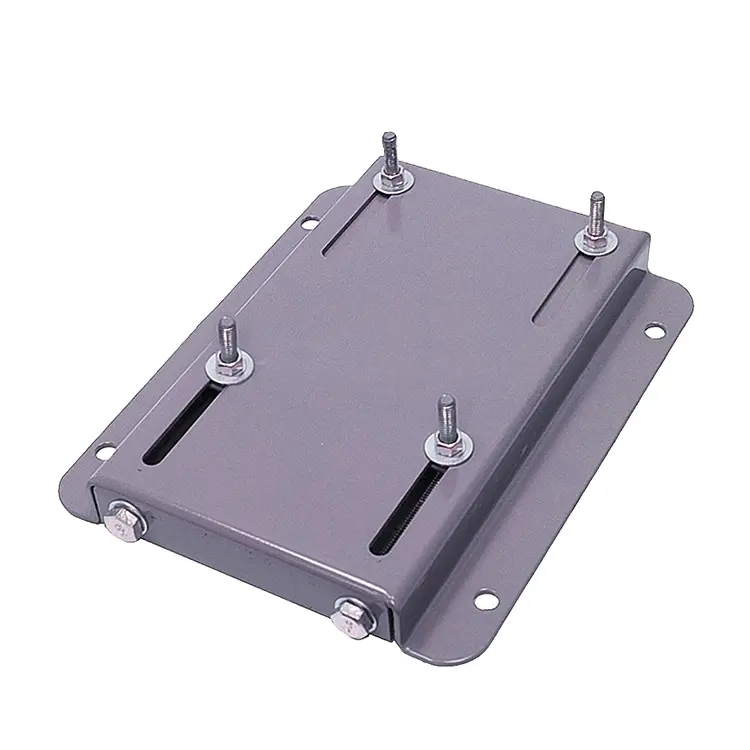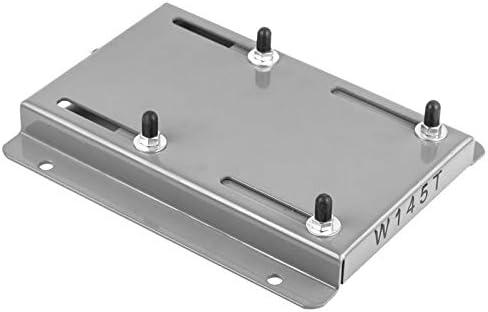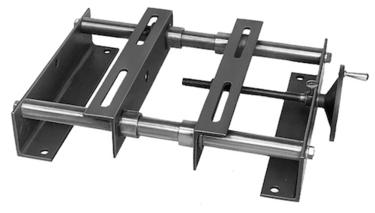Product Description
The feature of electric office desk is the adjustable height of the desktop.
According to the request of the user in the actual using, the office desk can be adjusted into different height.
It has the location memory to the prefer location which the user are used to. If the height is adjusted by other user,
You just need to press 1 memory button and then the height will be back to the original one.
It is very convenient and saves time for the user.
1. Input voltage: 110V/220V AC 50/60Hz;
2. Output voltage: 24V DC;
3. The stroke: 500mm ();
4. Max load capacity: 2000N;
5. No load speed: 23mm/s;
6. Type of duty: 10%.
| Model No.: | FYED-2-490-670-1000-H-W-2 |
| Input voltage | 100-240VAC |
| Output voltage | 24VDC |
| Load capacity | 1000N |
1. Button “UP1” and Button “DN1” are to control the lifting up and down of the office desk(self lock). Pressing button up1 and loose the finger, the office desk will lift up automatically. Pressing button DN1 at 1 time and loose the finger, the office desk will lift down automatically. It will stop when you press 1 of the button “UP1”, “UP2”, “DN1”, “DN2” in the process of automatically lifting up or down. (as pic 2)
2. Button “UP2”, “DN2” are to control the office desk up and down. Pressing button UP2, the desk will lift up and it will stop when you loose the finger. Pressing button DN2, the desk will lift down and will stop when you loose the finger. (as pic 2). (DN2 has the reset function too at the same time).
3. Reset button DN2 is used when the synchronous work of the office desk has the bigger accumulative tolerance and work abnormally. Pressing DN2 and not moving the finger, the desk will lift down all the time to the bottom. And then do not move your finger and keep pressing for 5 seconds, the office desk will have the rebound action which is up 5mm. It is a successful reset.
4. Memory button S need to work together with location key 1, 2, 3, 4. Firstly you need to set the memory location, for example when the desk lift up to 100mm location, you
Should press Key S and location button 1 at the same time. When the desk lift up to 200mm, press key S and button 2 at the same time. When the desk lift up to 300mm, press S and 3 at the same time. When the desk lift up to 400mm, press S and 4 at the same time. When we set well the location memory, we could use them. For example, when the desk is at any location, press button 1, the desk will be back to 100mm location. Press button 3, it is back to 300mm.
5. Digital display. When the desk lift up and down, the digital display will show the detail location and some code when the desk is in some special situation.
6. Used protection. When the desk work 3 minutes continuously, it will stop work automatically, and back to normal state after 999 seconds. Digital display will show “hot” code and count down 999 seconds.
| Style: | Modern |
|---|---|
| Material: | Metal |
| Wood Style: | Panel |
| Condition: | New |
| Input Voltage: | 110V-220VAC |
| Output Voltage: | DC24V |
| Samples: |
US$ 1/Piece
1 Piece(Min.Order) | |
|---|
| Customization: |
Available
|
|
|---|

Can motor bases accommodate motors with varying horsepower ratings?
Motor bases are designed to accommodate motors with varying horsepower ratings. Here’s a detailed explanation:
Motor bases are versatile mounting platforms that can accommodate a wide range of motors, including those with different horsepower ratings. The horsepower rating of a motor refers to its power output capability and is an important consideration when selecting a motor for a specific application.
Motor bases are typically designed to support a range of motor sizes and power ratings. They are manufactured with load-bearing capacities that can handle motors with varying horsepower requirements. The specific horsepower ratings that a motor base can accommodate will depend on its design, construction, and intended application.
When selecting a motor base, it’s important to consider the horsepower rating of the motor you intend to mount. Ensure that the motor base’s load-bearing capacity is sufficient to support the weight and dynamic forces generated by the motor during operation. Exceeding the load-bearing capacity of the motor base can lead to instability, increased vibrations, and potential safety hazards.
Motor bases are often labeled or specified with their load ratings, which indicate the maximum weight or horsepower they can support. It’s crucial to verify that the motor base’s load rating aligns with or exceeds the horsepower rating of the motor you plan to install.
Additionally, consider other factors such as the specific application requirements, environmental conditions, installation constraints, and any industry or safety standards. These considerations will help ensure that the motor base is suitable for the motor’s horsepower rating and the demands of the application.
It’s worth noting that while motor bases can accommodate motors with varying horsepower ratings, it’s essential to follow the manufacturer’s recommendations and guidelines for proper motor base selection, installation, and usage. Adhering to these guidelines ensures the motor base’s structural integrity, stability, and overall performance.
In summary, motor bases are designed to accommodate motors with varying horsepower ratings. They are manufactured with load-bearing capacities that can support a range of motor sizes and power requirements. When selecting a motor base, verify that its load rating aligns with or exceeds the horsepower rating of the motor being installed. By considering the specific requirements of the motor and the application, you can ensure a well-matched motor base that provides optimal support, stability, and performance.

Can motor bases be used with both AC and DC electric motors?
Yes, motor bases can generally be used with both AC (alternating current) and DC (direct current) electric motors. Here’s a detailed explanation:
1. Universal Compatibility: Motor bases are typically designed to accommodate a wide range of motor types and sizes. They are engineered to provide a universal mounting interface that can support various motor configurations, including both AC and DC motors. This allows for flexibility and ease of installation regardless of the motor type.
2. Standardized Mounting Patterns: Motor bases often adhere to standardized mounting patterns, such as those defined by organizations like the National Electrical Manufacturers Association (NEMA) or the International Electrotechnical Commission (IEC). These standards specify the dimensions and hole patterns for motor mounting, ensuring compatibility with different motor types, including AC and DC motors.
3. Adjustability: Many motor bases feature adjustable mounting slots or bolt-hole patterns. This adjustability allows for fine-tuning the motor’s position and alignment during installation, regardless of whether it’s an AC or DC motor. Adjustability is especially important for achieving optimal alignment, which is crucial for motor performance and efficiency.
4. Mechanical Stability and Support: Motor bases provide mechanical stability and support to electric motors, regardless of their power source. They help secure the motor in place and prevent excessive vibration, ensuring reliable and efficient operation. The structural integrity and load-bearing capacity of motor bases are designed to handle the requirements of both AC and DC motors.
5. Application-Specific Considerations: While motor bases can generally be used with both AC and DC motors, it’s important to consider specific application requirements. AC and DC motors may have different operational characteristics, such as starting current, torque characteristics, or speed control methods. These differences may influence the selection of a motor base, particularly if the application demands specialized features or adjustments to accommodate the specific motor type.
When selecting a motor base for use with AC or DC motors, it’s advisable to consult the motor manufacturer’s recommendations and specifications. Additionally, consider any application-specific factors that may influence the choice of motor base, such as environmental conditions, load requirements, or vibration considerations.
By ensuring compatibility and proper installation, motor bases can effectively support and enhance the performance of both AC and DC electric motors across a wide range of applications.

What materials are commonly used in the construction of durable motor bases?
Durable motor bases are constructed using various materials that provide strength, stability, and longevity. Here’s a detailed explanation:
Motor bases are designed to withstand the weight and operational forces of electric motors while maintaining stability and alignment. The choice of materials for motor base construction depends on factors such as the motor size, application requirements, and environmental conditions. Here are some commonly used materials:
1. Steel: Steel is one of the most commonly used materials for motor bases due to its exceptional strength and durability. Motor bases made of steel can withstand heavy loads and resist deformation. Steel motor bases are known for their rigidity, stability, and ability to dampen vibrations. They are suitable for a wide range of motor sizes and industrial applications.
2. Cast Iron: Cast iron is another popular material for motor bases, especially for larger motor sizes. Cast iron offers excellent stability and resistance to deformation under heavy loads. It has high compressive strength and can effectively absorb and dampen vibrations generated during motor operation. Cast iron motor bases are known for their long-lasting performance and suitability for demanding industrial environments.
3. Aluminum: Aluminum motor bases are commonly used for smaller or lighter motor applications. Aluminum is lightweight, corrosion-resistant, and offers good thermal conductivity. Motor bases made of aluminum are easy to handle and install. They are often preferred in applications where weight reduction is desired, such as in portable or mobile equipment.
4. Composite Materials: In some cases, motor bases may be constructed using composite materials such as fiberglass-reinforced plastic (FRP). Composite motor bases offer a combination of strength, lightweight construction, and corrosion resistance. They are particularly suitable for applications where weight reduction, electrical insulation, or resistance to chemicals and corrosive environments are important considerations.
5. Other Materials: Depending on specific requirements, motor bases can also be constructed using other materials such as stainless steel, galvanized steel, or specialized alloys. These materials may be chosen for their specific properties, such as resistance to corrosion, high-temperature applications, or compatibility with certain environmental conditions.
When selecting a motor base material, it’s essential to consider factors such as load capacity, environmental conditions (such as exposure to moisture, chemicals, or extreme temperatures), and the specific needs of the application.
In summary, durable motor bases are commonly constructed using materials such as steel, cast iron, aluminum, composite materials, and other specialized alloys. Each material offers specific advantages in terms of strength, stability, weight, corrosion resistance, and other properties, allowing motor bases to withstand the demands of industrial applications.


editor by CX 2023-12-11